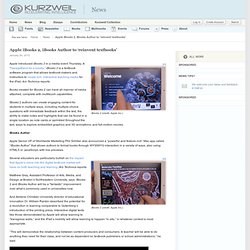

Keeping the IT Help Desk In-House. IT Trends | Feature Keeping the IT Help Desk In-House University IT departments are facing ever-growing demands for support.

Bring-your-own-device policies, distance ed students in multiple time zones, evening and weekend classes, and students pulling all-nighters all keep IT staff on their toes and increasingly require 24/7 support. Faced with these growing demands, some universities choose outsourcing as a way to increase service while controlling costs, but the Division of Information Technology at Washington, DC's George Washington University (GWU) is achieving those goals and more, while bucking the outsourcing trend.
The university began the process of reevaluating its support services several years ago. When the Division of IT began developing plans to reorganize its IT support services and extend its hours of service, the administration engaged all levels of IT staff, from part-time hourly employees to senior managers, as well as partners from across the university. Joe Sabia: The technology of storytelling. 50 Surprising Facts About Technology Usage In College. 5 Ways To Be A Better Public Speaker 6.44K Views 0 Likes If you've been asked to speak at a conference or host a seminar, you may be shaking in your boots.
Not only is the thought of speaking in public nerve-wracking, but being in charge of a seminar that no one wants to at... How Students Benefit From Using Social Media 12.67K Views 0 Likes A lot of criticism has been leveled at social media and the effect it has on the way students process and retain information, as well as how distracting it can be. Apple iBooks 2, iBooks Author to ‘reinvent textbooks’ iBooks 2 (credit: Apple Inc.)

Apple introduced iBooks 2 in a media event Thursday. A “GarageBand for e-books,” iBooks 2 is a textbook software program that allows textbook-makers and instructors to create rich, interactive teaching media for the iPad, Ars Technica reports. Books created for iBooks 2 can have all manner of media attached, complete with multitouch capabilities. iBooks 2 authors can create engaging content for students in multiple ways, including multiple-choice questions with immediate feedback within the text, the ability to make notes and highlights that can be found in a single location as note cards or sprinkled throughout the text, ways to explore embedded graphics and 3D animations, and full-motion movies. iBooks Author Several educators are particularly bullish on the impact that Apple’s move into the digital textbook market will have on both teaching and learning, Ars Technica reports.
And Abilene Christian University director of educational innovation Dr. Apple to announce tools, platform to ‘digitally destroy’ textbook publishing. 60scs_v2.jpg (JPEG Image, 1191x842 pixels) - Scaled (76%) Teachers take to Twitter to improve craft and commiserate. After her first year teaching history in a public high school in the District, Jamie Josephson was exhausted and plagued by self-doubt.

Teaching had been more grueling than she ever expected. Law school began to sound appealing. Then she stumbled onto Twitter. In the vast social network on the Web, she discovered a community of mentors offering inspiration, commiseration and classroom-tested lesson plans. “Twitter essentially prepared me to go into my second year and not give up,” said Josephson, now in her third year at Woodrow Wilson High in Northwest Washington.
Josephson (known to fellow tweeters by her handle, @dontworryteach) is one of a small but growing number of teachers who are delving into the world of hashtags and retweets, using Twitter to improve their craft by reaching beyond the boundaries of their schools to connect with colleagues across the country and around the world. Images show excerpts from Twitter discussions among teachers who share tips and other information. 5 Ways Technology Has Changed One of Education’s Most Traditional Subjects: History. There’s no denying that the influence of technology is everywhere in today’s classrooms. From the fifth grader using an iPad to the professor projecting digital renderings onto the screen, from the student working in a genome lab to the one getting a degree online.
While few people would deny the reality of this transformation, the popular perception is that technology’s reach extends only to certain subjects. It surely influences the sciences, people believe, and it offers interactive solutions to the challenges of elementary education. But the humanities are perceived as old fashioned, set in their ways, and largely immune to technological influences. This belief is far from accurate. Accessible Documents Old documents were once only viewed in musty and distant archives, accessible only to a lucky few. Searchable Scholarly Works The digitization trend has also extended to secondary sources, and companies such as Google have amassed vast collections of scholarly books.
People Searches.